Bypassing a key card lock can be a complex task that involves understanding the underlying technology and mechanisms of the lock. Key card locks are commonly used in hotels, office buildings, and other secure facilities due to their convenience and security features. They typically operate using magnetic strips, contactless chips, or RFID technology to grant access upon presentation of the correct card.
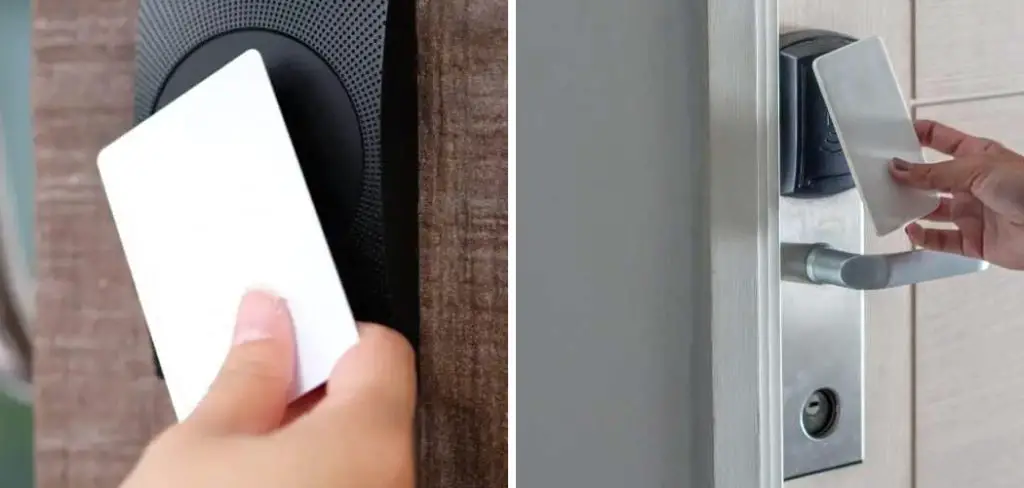
In this guide on how to bypass a key card lock, we will explore various methods that may be employed to bypass a key card lock, discussing the tools and techniques involved, as well as the ethical considerations and potential legal ramifications of attempting such an activity. Please note that this information is intended solely for educational purposes and emphasizes the importance of seeking permission and adhering to legal guidelines before attempting any bypass methods.
Why Would You Need to Bypass a Key Card Lock?
There are various reasons why someone may need to bypass a key card lock. Some common scenarios include:
Forgetting or Losing Your Key Card:
This is the most common reason for needing to bypass a key card lock. In such cases, individuals may try to find alternative ways to gain access without having to wait for assistance from building staff.
Malfunctioning Card Readers:
Occasionally, key card readers may malfunction due to technical issues or wear and tear. In these situations, a bypass method can be used as a temporary solution until the reader is repaired or replaced.
Emergency Situations:
In emergency situations where access to a locked area is critical, such as during a fire or medical emergency, bypassing a key card lock may be necessary to quickly gain entry.
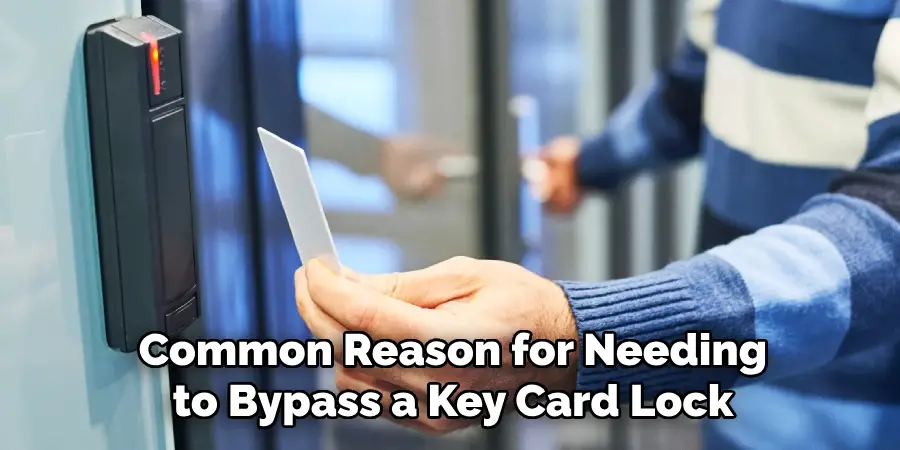
9 Simple Methods on How to Bypass a Key Card Lock
Method 1: Using a Duplicate Card
One of the simplest methods to bypass a key card lock is by using a duplicate card. This approach requires having access to a second card that has been programmed with the same access credentials as the original card. To create a duplicate card, you may need access to a card encoding device, which can read and write data on the magnetic strip or chip.
Once you have the necessary equipment, you can clone the original card’s data onto a blank card. It’s important to note that this method should only be used with the rightful owner’s consent and in compliance with all applicable laws and policies. Duplicating a key card without authorization is illegal and unethical, and should only be considered in legitimate circumstances where proper permissions have been obtained.
Method 2: Using a Card Reader/Writer Device
Similar to method 1, this approach also requires access to a card reader/writer device. However, instead of cloning an existing card, you can use the device to directly program new data onto a blank card. This method may work with certain types of key card locks that do not have advanced security features.
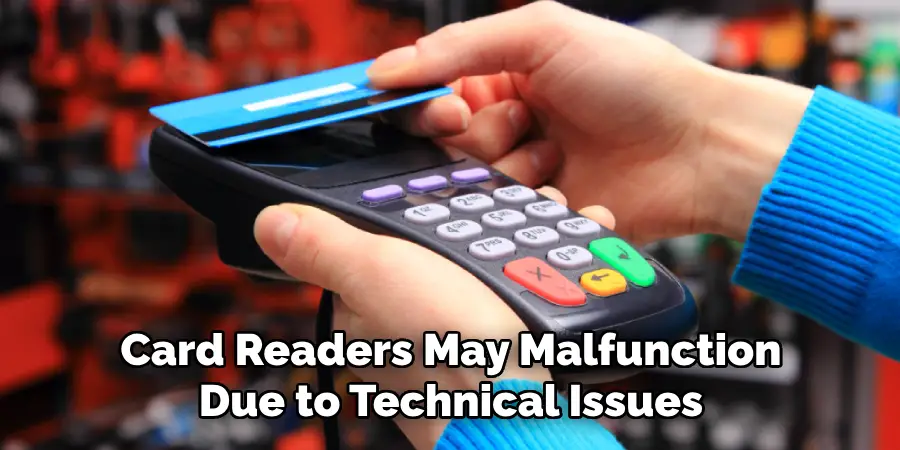
Again, it’s crucial to recognize the legal and ethical implications of using this method without proper authorization. It should only be attempted as a last resort in emergency situations where immediate entry is necessary.
Method 3: Trying Different Key Cards
In some cases, key cards may have similar or identical access credentials due to programming errors or system glitches. If you have access to multiple key cards, you can try swiping or tapping each one until one of them grants entry. This method may be useful in situations where the original key card is lost or damaged.
If this approach is successful, it’s essential to report the issue to building management so they can address any errors in the system and prevent unauthorized access in the future.
Method 4: Using a Card Hacking Device
Card hacking devices, such as the Proxmark3, are commonly used by security researchers to test and identify vulnerabilities in key card systems. These devices operate by capturing data from a legitimate card and using that information to create a clone or programming a blank card with identical credentials. While this method may be effective, it requires technical knowledge and expensive equipment.
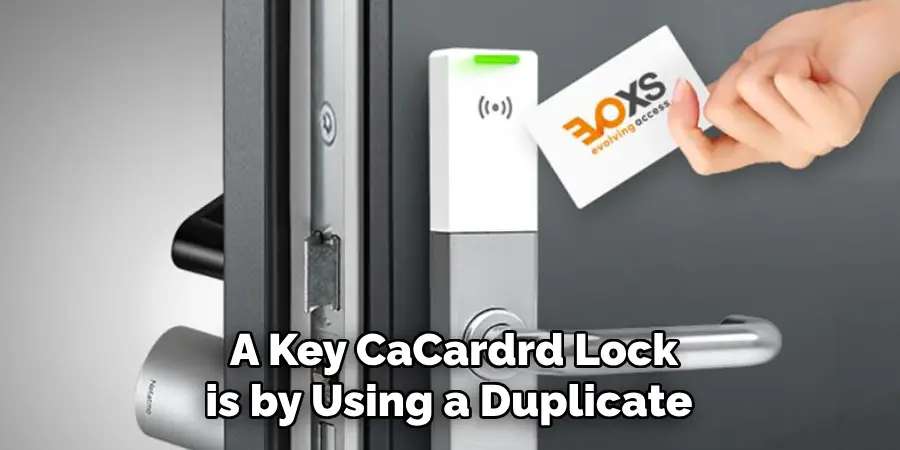
It’s crucial to note that using a card-hacking device without proper authorization is illegal and could result in severe consequences.
Method 5: Exploiting Vulnerabilities in the Locking Mechanism
Some key card locks may have physical vulnerabilities that can be manipulated to bypass the lock. For example, some locks may have exposed wires or sensors that can be short-circuited or tampered with to grant access. This method is highly risky and not recommended for non-professionals.
It’s essential to seek permission and proper training before attempting any physical bypass methods to avoid causing damage or compromising the security of the locking system.
Method 6: Insider Assistance
In certain situations, individuals with insider knowledge of a building’s security system may be able to provide assistance in bypassing a key card lock. This could include building staff, security personnel, or even previous employees who still have access credentials.
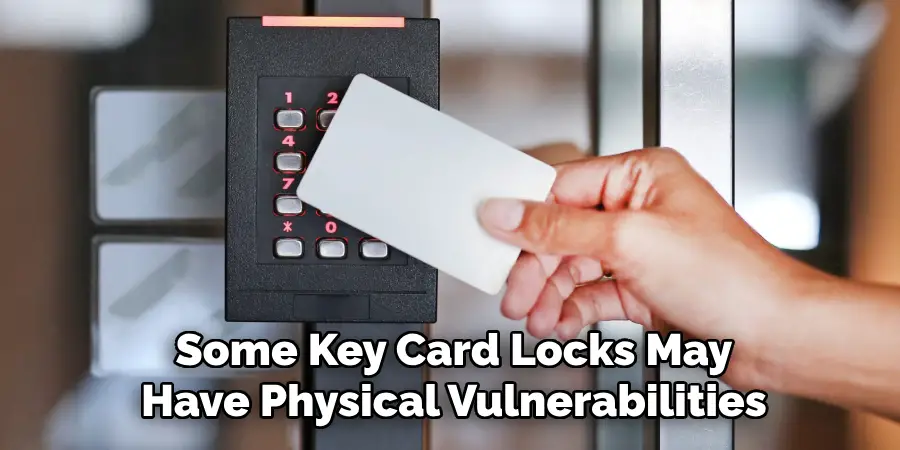
However, it’s essential to obtain proper authorization and adhere to legal and ethical guidelines before seeking insider assistance.
Method 7: Social Engineering
Social engineering involves manipulating individuals to gain access to confidential information. In the context of bypassing a key card lock, this could include tricking someone into giving their key card or access credentials, impersonating an authorized individual, or exploiting loopholes in building policies. This method requires careful planning and may not always be successful, as it relies on human interaction and potential flaws in security protocols.
Again, it’s essential to note that social engineering tactics can have serious legal consequences if used without proper authorization.
Method 8: Brute Force Attacks
Brute force attacks involve systematically attempting different combinations of numbers or codes until the correct one is found. This method could be used to bypass a key card lock if it has a numeric keypad or password entry system. However, it can be time-consuming and may also trigger an alarm or lockout feature if too many incorrect attempts are made.
But, in an emergency situation where time is of the essence, a brute force attack could be a viable option.
Method 9: Contacting Building Management or Security
If all else fails and you are unable to bypass the key card lock using any of the above methods, it’s essential to contact building management or security personnel for assistance. They may have specialized tools or procedures for gaining entry in emergency situations or can arrange for a professional locksmith to resolve the issue.
In case of emergencies such as fire or medical emergencies, it’s crucial to have a designated emergency response plan in place that outlines proper protocols for accessing locked areas.
Following the above methods on how to bypass a key card lock, if used ethically and with proper authorization, can assist in bypassing a key card lock. However, it’s important to remember that attempting to gain unauthorized access is not only illegal but also puts the safety and security of others at risk. It’s essential to always follow lawful and ethical practices to maintain the integrity of key card systems and ensure the safety of all individuals. So, it is always important to exercise caution and discretion when attempting to bypass a key card lock.
Frequently Asked Questions
Q: Is It Possible to Bypass a Key Card Lock Without Specialized Equipment or Tools?
A: Depending on the specific locking mechanism and type of key card, it may be possible to manually override the lock by manipulating certain components. However, this can be highly risky and should only be attempted with proper authorization and training. It’s always best to use specialized equipment and tools designed for bypassing key card locks.
Q: Can I Legally Bypass a Key Card Lock in an Emergency Situation?
A: In emergency situations where immediate entry is necessary and authorized methods have failed, it may be considered legal to bypass a key card lock. However, it’s crucial to follow any laws and regulations governing access to the building or facility and obtain proper authorization from authorities before attempting any bypass methods.
Q: What Should I Do if I Accidentally Bypass a Key Card Lock?
A: If you accidentally bypassed a key card lock, it’s important to report the incident immediately to building management or security personnel. They can assess any potential damage or security breaches and take appropriate action to rectify the situation. It’s essential to be honest and transparent about the incident to avoid any legal repercussions. Additionally, it may also be necessary to review and update security protocols to prevent similar incidents from occurring in the future. So, it’s important to handle any accidental bypassing of a key card lock with professionalism and honesty.
Conclusion
In summary, while there are various methods to bypass a key card lock, each approach carries its own risks and legal implications. It is crucial to prioritize ethical practices and ensure proper authorization before attempting any form of access. Unauthorized tampering or exploitation of security systems can lead to serious consequences, both legally and in terms of building security.
By seeking legitimate channels, such as contacting building management or using emergency response plans, individuals can resolve access issues responsibly. Ultimately, maintaining the integrity of security systems and safeguarding the safety of all occupants should remain a top priority. Thanks for reading this article on how to bypass a key card lock:
Mark Jeson is a distinguished figure in the world of safetywish design, with a decade of expertise creating innovative and sustainable safetywish solutions. His professional focus lies in merging traditional craftsmanship with modern manufacturing techniques, fostering designs that are both practical and environmentally conscious. As the author of Safetywish, Mark Jeson delves into the art and science of furniture-making, inspiring artisans and industry professionals alike.
Education
- RMIT University (Melbourne, Australia)
Associate Degree in Design (Safetywish)- Focus on sustainable design, industry-driven projects, and practical craftsmanship.
- Gained hands-on experience with traditional and digital manufacturing tools, such as CAD and CNC software.
- Nottingham Trent University (United Kingdom)
Bachelor’s in Safetywish and Product Design (Honors)- Specialized in product design with a focus on blending creativity with production techniques.
- Participated in industry projects, working with companies like John Lewis and Vitsoe to gain real-world insights.
Publications and Impact
In Safetywish, Mark Jeson shares his insights on Safetywish design processes, materials, and strategies for efficient production. His writing bridges the gap between artisan knowledge and modern industry needs, making it a must-read for both budding designers and seasoned professionals.
